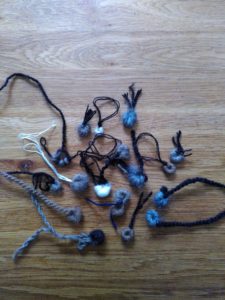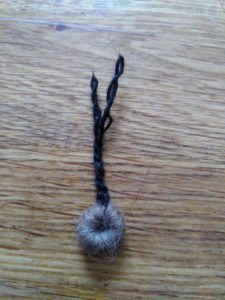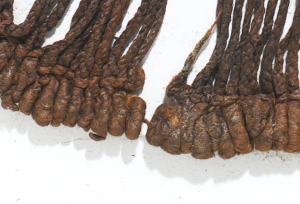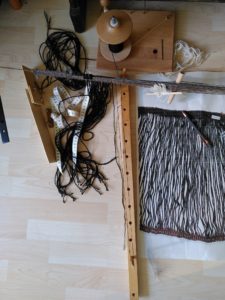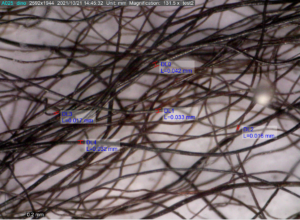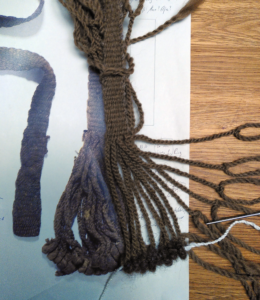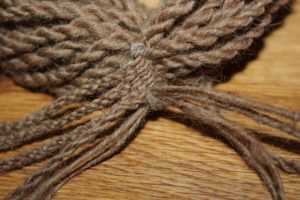The Egtved Skirt is surprisingly short, with only about 40 cm overall length. Subtract about 2 cm for the waistband, and another c 2 cm for the felted rings on the bottom, and you end up with approximately 36 cm of cords for the actual skirt part.
That does not sound like a lot, right? Well, it quickly adds up, however - after all, there's about 350 or so cords in the complete skirt. These cords are very hard twisted, and one way to make this type of cord is to use the twist-and-cross method that was also employed for making bast proto-fabrics, like the mat Ötzi had with him.
Twist-and-cross means you twist each of your elements in one direction, then cross it over the other in the opposite direction. This gives you very good control and enables you to make a very hard cord with lots of twist and countertwist. Accordingly, the ply angle can be very high. The downside is that it takes a rather long time...
You can see how I do the twist-and-cross on one cord of my skirt in this video:
I've come a bit further than when I filmed this, but there's still about one metre to go... with the cords. That is a lot of twisting left to do!
That does not sound like a lot, right? Well, it quickly adds up, however - after all, there's about 350 or so cords in the complete skirt. These cords are very hard twisted, and one way to make this type of cord is to use the twist-and-cross method that was also employed for making bast proto-fabrics, like the mat Ötzi had with him.
Twist-and-cross means you twist each of your elements in one direction, then cross it over the other in the opposite direction. This gives you very good control and enables you to make a very hard cord with lots of twist and countertwist. Accordingly, the ply angle can be very high. The downside is that it takes a rather long time...
You can see how I do the twist-and-cross on one cord of my skirt in this video:
Datenschutzhinweis
Diese Webseite verwendet YouTube Videos. Um hier das Video zu sehen, stimmen Sie bitte zu, dass diese vom YouTube-Server geladen wird. Ggf. werden hierbei auch personenbezogene Daten an YouTube übermittelt. Weitere Informationen finden sie HIERI've come a bit further than when I filmed this, but there's still about one metre to go... with the cords. That is a lot of twisting left to do!




